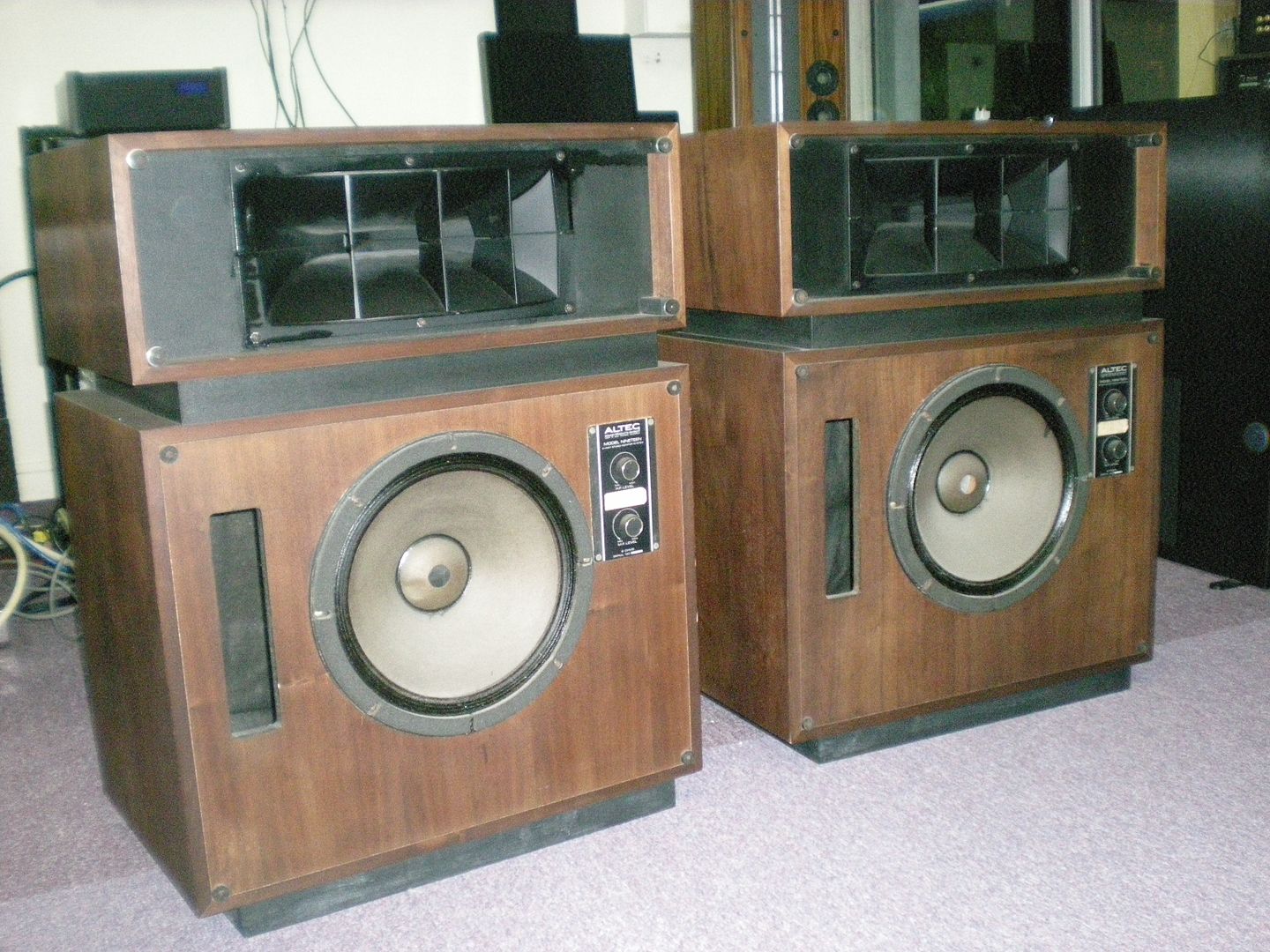The efficiency of these (also called "the voice of the theater") is amazing. I ran two model 19's and a pair of altec 'Madrids' @ 4 ohms with a Nakamichi PA 7, and to this day, I think its the best sounding system I have ever heard. The only thing that I think would make it better, would be with a Carver Silver series Tube amp.

I would argue, (as is my nature), that nothing so extreme is required to get the best out of this type of speaker. In fact, snob appeal aside, a transistor amplifier is better for reproducing recorded music than a tube amp. This is because the output stage is wired directly to the voice coil, and doesn't go through the step down transformer of a tube amp! The damping factor is much higher in a transistor amp, and this controls the speaker cone movement after the signal has ceased, and prevents overshoot. The reason that tube amps work so well for guitar, is that they have almost no damping factor, and this contributes to sustain.
One of the biggest ironies or conundrum of high fidelity sound reproduction is, that you need incredibly precise equipment, to reproduce distortion accurately
Old time loudspeakers such as these Altecs, have Alnico magnets, which are very potent, but tend to degauss a very high power levels. Since none of the three metals in Alnico are magnetic in and of themselves, they must be gaussed, and I'm thinking that high power levels must reverse that process.
I had a pair of the JBL D-130s in in my row house, 40 watts a side was plenty to drive those speakers into the auditory pain level, without any audible distortion.
The trick with the Altecs high end is obviously the horn loading. Bass reflex type cabinets can produce about 3% electrical to acoustic efficiency transfer. But, with horn loading, transfer efficiency can approach 30%!. The typical acoustic suspension design, has an efficiency of only 1%.
The tragedy, and the irony of these early designs is this; these are the only speakers that will easily equal or surpass, the dynamic range available in digital sound reproduction. Past source material, (vinyl or tape), didn't really have much more than 50db dynamic range, so the only material these machines were designed for, and could benefit from, was live performance.
Today, there is an inbred pack of morons at the recording consoles, who think the entire performance has to be crammed into the top 50db of a CD's dynamic range. One giant step backward, since now you have source material with only 50db of dynamic range once again, and plastic Tupperware "high fidelity speakers", to try and reproduce it. Garbage in = garbage out, still, after all these years.
To keep this a bit on topic, do you think that Leslie organ speaker cabinets would benefit from extra fans....?

:wave:
 try helping your exhaust fans do a better job by putting a 'pull ' fan on the other side. It can drop ambient case temps by 5c or more. here I converted HDD dual 60mm cooler to get more PSU heat extracted, and another 140mm fan on the other side of my interior rear exhaust fan. It moves a lot of air/heat from the case. My case sensors showed on average a 4-6C drop during high load activities.
try helping your exhaust fans do a better job by putting a 'pull ' fan on the other side. It can drop ambient case temps by 5c or more. here I converted HDD dual 60mm cooler to get more PSU heat extracted, and another 140mm fan on the other side of my interior rear exhaust fan. It moves a lot of air/heat from the case. My case sensors showed on average a 4-6C drop during high load activities. 

